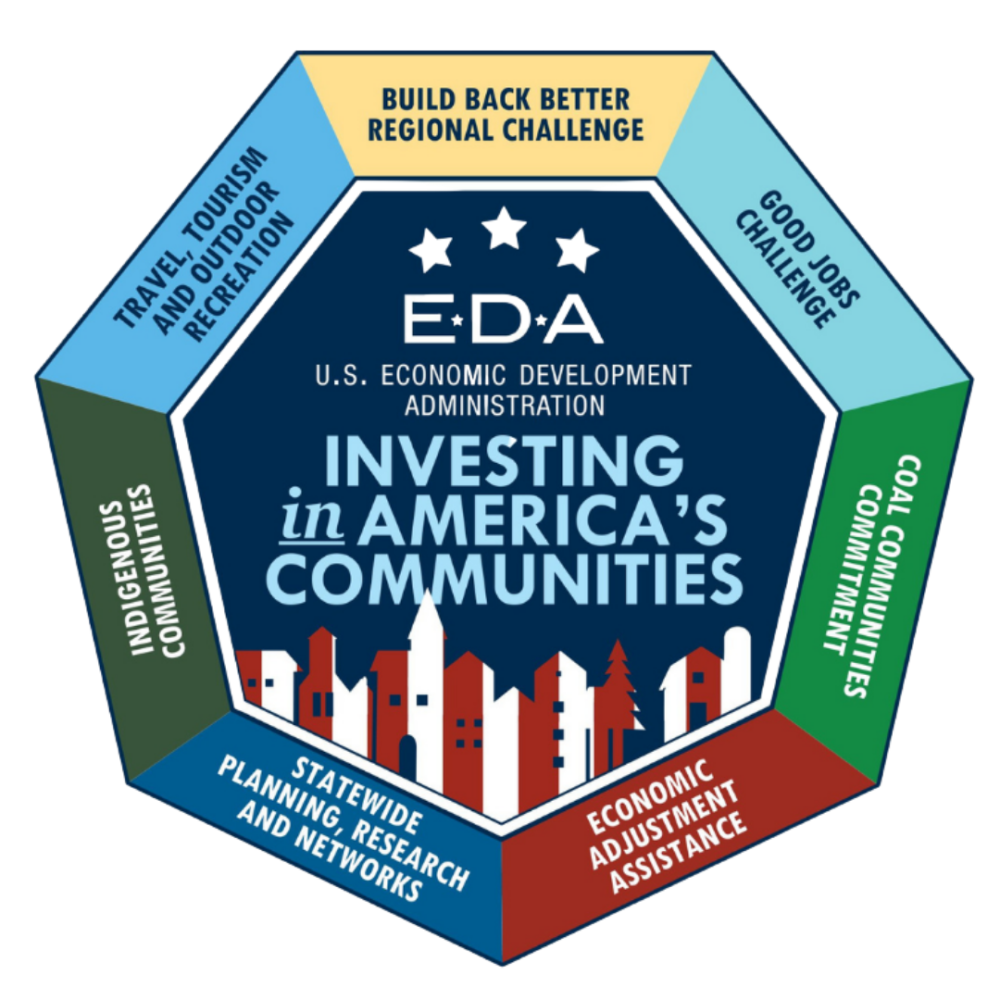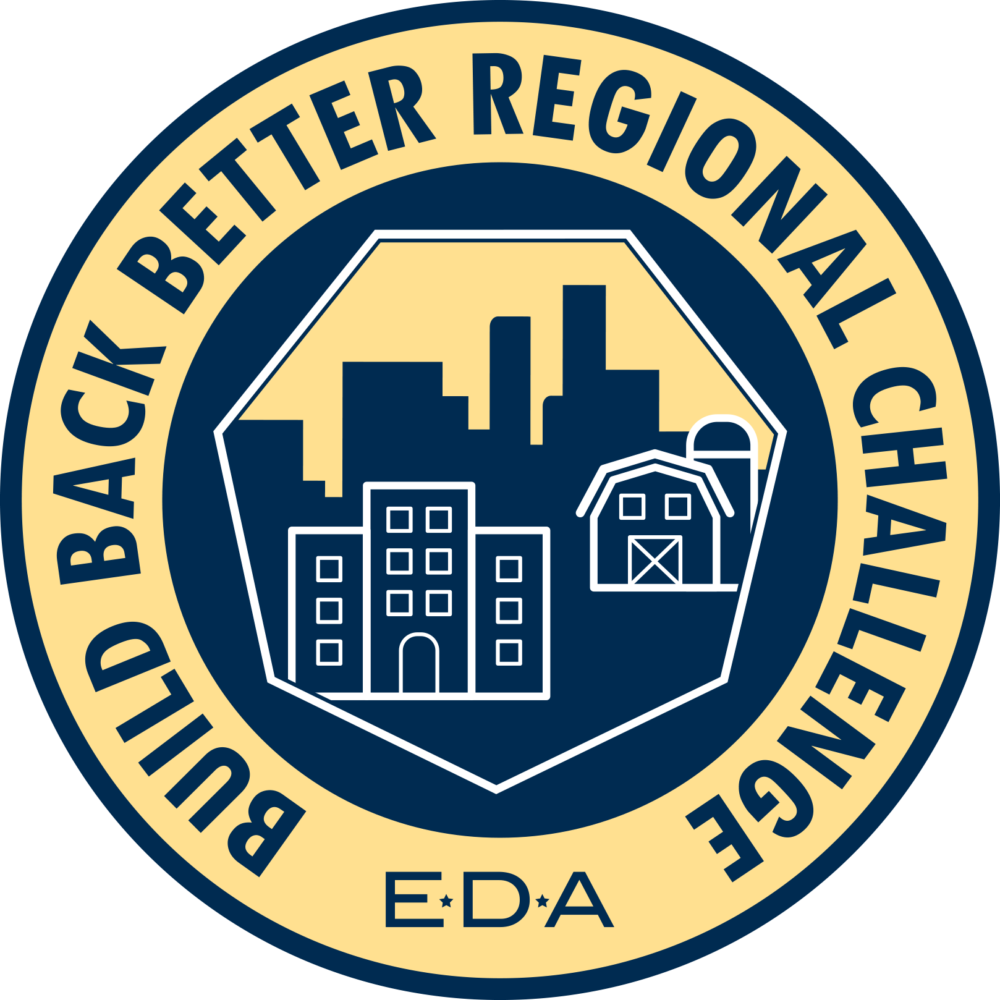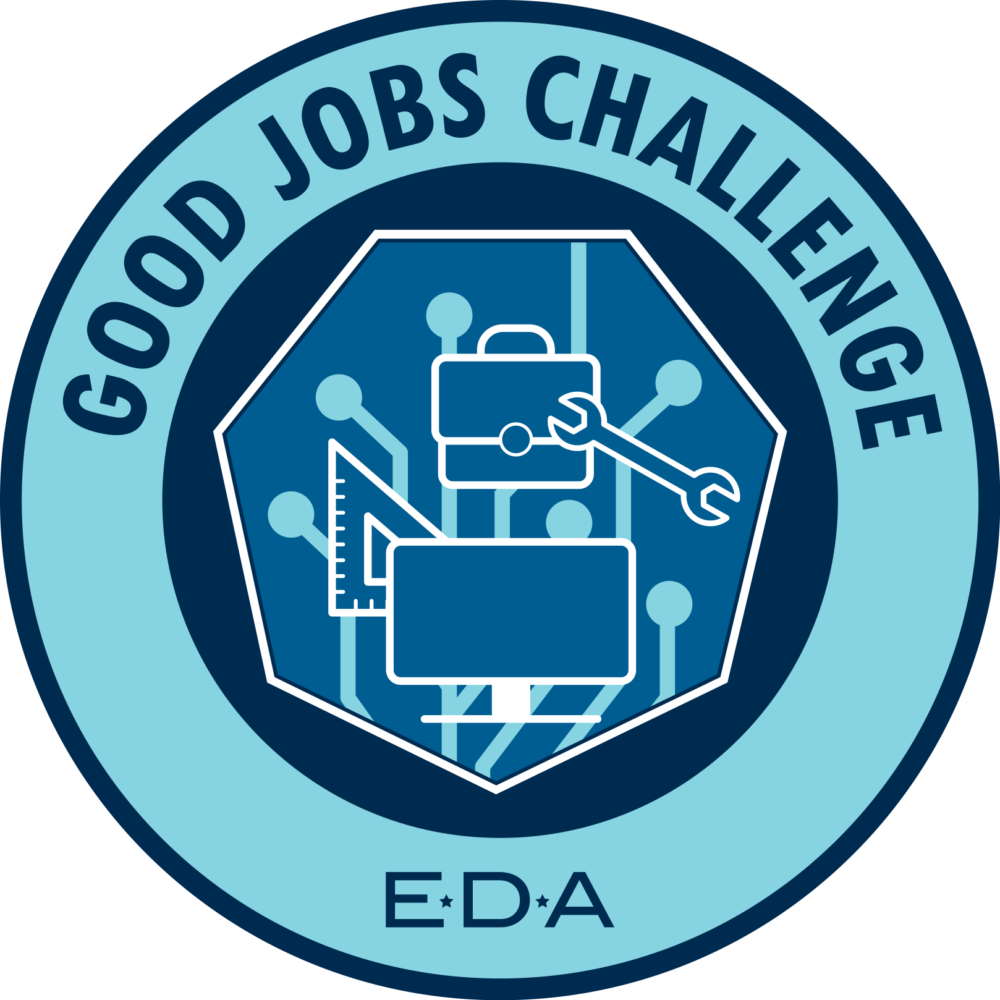$3 billion in federal funding is now available through new EDA funds to support economic development across the United States. We’re breaking down these grant opportunities so you can understand how to leverage these funds in your own community.
Before we get into the details, there are two key takeaways to keep in mind:
 The U.S. Economic Development Administration (EDA) was allocated $3 billion in funding through the American Rescue Plan (ARP) in early 2021 to help communities across the Unites States recover from the coronavirus pandemic and accelerate economic and workforce recovery.
The U.S. Economic Development Administration (EDA) was allocated $3 billion in funding through the American Rescue Plan (ARP) in early 2021 to help communities across the Unites States recover from the coronavirus pandemic and accelerate economic and workforce recovery.
This effort is truly all-encompassing; funds will go toward infrastructure and new construction, rebuilding tourism and travel sectors, supporting indigenous communities and coal communities, creating new workforce development and training opportunities for Americans to get back to work, and more.
The EDA is breaking down the $3 billion into a series of 6 programs, collectively called “Investing in America’s Communities.” U.S. Secretary of Commerce Gina M. Raimondo said the program is designed to support “innovative new approaches to ensure that we can increase American competitiveness by strengthening our workforce, businesses, and communities and build back better in regions across the country.”
The 6 programs are:
This article will focus on the first three programs that specifically support workforce development and skills-based training. Click on the links above to jump to a particular program, or keep reading to learn about them all.
The Build Back Better Regional Challenge is focused on improving the economic stability of an entire region. The goal is to revitalize the industry sectors that are crucial to that region’s economy, whether that be manufacturing, agriculture, construction, healthcare, energy, etc. The program is designed for bold, collaborative initiatives that either grow new industry clusters or scale existing ones through planning, infrastructure, innovation and entrepreneurship, workforce development, access to capital, and more.
 How much money is allocated for the Build Back Better Regional Challenge?
How much money is allocated for the Build Back Better Regional Challenge?EDA has allocated $1 billion in total funds for the Build Back Better Regional Challenge which will be distributed to a select number of regions across the U.S. over two phases.
The key words here are bold and collaboration.
Standout applications will have a collaborative team of industry, community, and higher education partners aligned around a comprehensive plan to build and scale an industry sector in the region. The strategic plan can include three to eight distinct but related projects within the region – all centered on building up a particular industry that is vital to that particular region’s economy.
This is a great opportunity for higher education, local nonprofits and community partners, and industrial employers to partner on a workforce development project that would provide skills-based training for the incumbent, underemployed or unemployed workforce. Focus on training in industries where there is high demand for workers – like manufacturing, warehousing and distribution, healthcare, construction and the skilled trades.
Coalition members eligible to apply for investment assistance for their region include a(n):
Each application should have one lead institution that is in charge of the whole project – including submitting the grant application, coordinating the roles of various partners, following through on implementation, and using the resources of each partner to ensure the investment has the greatest possible impact on the region.
There are two funding phases, with the following amounts awarded and due dates:
View the Build Back Better Regional Challenge One-Pager
The Good Jobs Challenge focused on providing skills-based training to underserved populations so these individuals can secure a good, high-demand job. The goal is to get these Americans back to work, while also providing employers with the talent they’re looking for. The program is designed to remove some of the labor market barriers these populations traditionally face and give them an opportunity to get a great job with a family-supporting wage, benefits and growth opportunities.
 How much money is allocated for the Good Jobs Challenge?
How much money is allocated for the Good Jobs Challenge?EDA has allocated $500 million in funds to support collaborative skills training systems and programs. Funds can be provided for any of three phases, depending on the individual applicants’ proposal.
Standout applications will have strong involvement from local employers who are looking to hire newly-trained individuals. Successful projects will consider the following:
Coalition members eligible to apply for investment assistance for their region include a(n):
Note: The Good Jobs Challenge grants will be allocated through a single integrated award. EDA will make awards to either the System Lead Entity of a regional workforce system or the Backbone Organization of a sectoral partnership as the lead applicant. These organizations may make subawards to other eligible recipients as necessary to the proposed project and as approved by EDA.
Applications are due by January 26, 2022. The EDA recommends applicants submit their proposals as early as possible.
View the Good Jobs Challenge Challenge One-Pager
The Economic Adjustment Assistance program is the most flexible of the EDA’s six programs. The goal is to help communities innovate, plan, build and put people back to work in their region. The funds are designed for quite a wide range of uses, including: technical, planning, workforce development, entrepreneurship, and public works and infrastructure projects. These can include construction and non-construction projects.
 How much money is allocated for the Economic Adjustment Assistance Program?
How much money is allocated for the Economic Adjustment Assistance Program?EDA has allocated $500 million in funds to for this program. $200 million of this total will be allocated to supporting coal communities as part of EDA’s Coal Communities Commitment.
A wide range of projects could fit the Economic Adjustment Assistance program, but standout proposals will focus on job creation and economic recovery.
Eligible applicants for EDA’s Economic Adjustment Assistance program include a(n):
This is another way the Economic Adjustment Assistance Program is flexible: applications are accepted and awarded on a rolling basis. So we highly recommend submitting your proposal as soon as possible.
View the Economic Adjustment Assistance Program One-Pager
This $3 billion investment is one of the biggest opportunities facing higher education, local employers and workforce development organizations in decades. Now is the time to take advantage of these funds and up-skill our workforce!
Applications are open for each of these opportunities. You can visit the American Rescue Plan EDA page to jump to any individual program, and all the details, resources, FAQs, webinars, deadlines and application links will be available there.
But here’s the key: this is all about collaboration! Bring stakeholders to the table to develop a cohesive strategy that clearly defines the target training recipients, the training plan, the needed curriculum and training resources, the certifications or outcomes, and the employers and open jobs that training will lead to.
We can help! We’ve been helping higher education, community organizations and industrial employers train their learners for high-wage, high-skilled careers for over 50 years. Fill out the form below if you need help strategizing, finding partners, or putting together training resources (like curriculum, virtual eLearning and hands-on training systems).